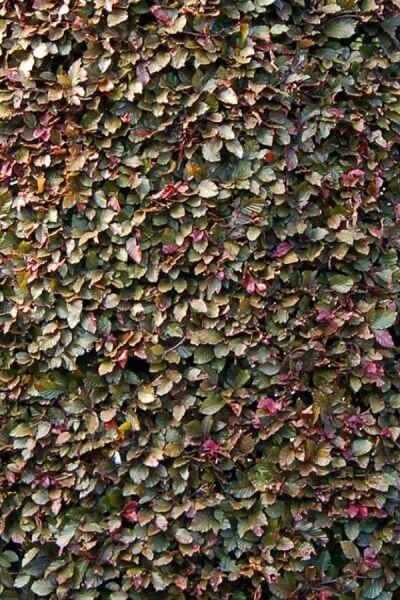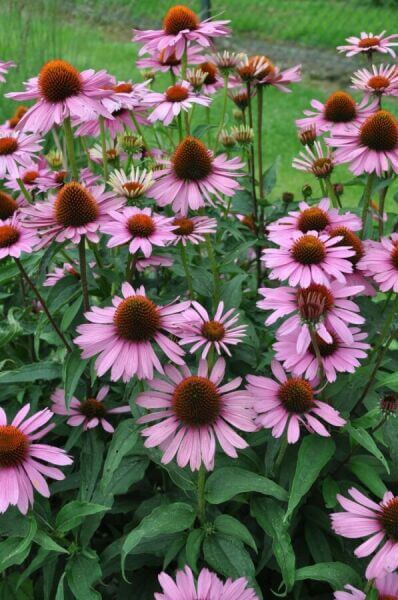Best Hedging Plants For Contemporary Borders
Best Hedging Plants For Contemporary Borders
Blog Article
Hedge Plants For Partitioning Gardens
Boost your garden's attraction with rich hedge ranges such as Yew (Taxus), Thuja, Laurel, Photinia, and Bamboo, celebrated for their structural stability and environmental benefits.
Yew and Thuja supply evergreen coverage and winter season resilience, while Laurel provides quick growth and broad, aromatic leaves.
Photinia includes seasonal charm with its dynamic red foliage, and Bamboo provides a low-maintenance, serene atmosphere.
These hedges enhance air quality, reduce noise, and develop tranquil, private areas.
Proper planting, spacing, and maintenance make sure energetic growth and environmental harmony.
Explore how these rich ranges can raise your garden's beauty and well-being.
Secret Takeaways
Change Your Garden With Lush Hedge Ranges
- Select Yew for its thick, evergreen growth and unrivaled durability.
- Opt for Laurel for its fast growth and broad leaves, guaranteeing fast personal privacy.
- Select Photinia for its lively seasonal foliage, which turns a striking dark red.
- Use Bamboo for a low-maintenance, winter-hardy hedge with aesthetic appeal.
- Space plants 2-3 per meter and prune routinely for ideal development and health.
Popular Hedge Plants
When changing a garden with lush hedge ranges, it's important to consider popular hedge plants such as Yew, Thuja, Laurel, and Photinia due to their distinct qualities and advantages.
Yew (Taxus) is extremely respected for its durability and thick, green development, making it a prime option for withstanding landscapes.
Thuja is kept in mind for its evergreen foliage and robust winter durability.
Photinia includes seasonal vibrancy with red leaves that darken in time, producing dynamic visual appeal.
Laurel provides fast development and aromatic, broad leaves, suitable for quick personal privacy.
Furthermore, Bamboo is an exceptional option for ambiance, using a low-maintenance, winter-hardy alternative that boosts the garden's visual with its stylish, swaying walking sticks.
These choices cater to a variety of horticultural requirements and preferences.
Benefits of Garden Hedges
Garden hedges offer a wide range of advantages, making them an important addition to any landscape. These natural barriers are economical to execute and supply considerable wind protection, enhancing air blood circulation and contributing to noise decrease. The dense foliage of hedges like Thuja and Beech ensures personal privacy by obstructing presence, developing a tranquil and secluded environment.
Hedges also play a vital role in microclimate regulation, offering a stable environment that promotes plant development and minimizes temperature level changes. Their detailed leaf structures filter toxins, improving air quality and adding to a healthier garden environment.
Moreover, hedges excel in noise decrease, soaking up and deflecting acoustic waves to lower ambient sound levels. This dual functionality of offering both visual and acoustic privacy boosts the overall tranquility and visual appeal of any garden.
Planting and Upkeep Tips
For an effective hedge, meticulous preparation of the planting area is vital. Ensure the soil has appropriate pH and drain to support strong root advancement.
Area the plants appropriately for the chosen species. Water the hedge frequently during its preliminary growth phase, changing as needed with seasonal modifications.
Implement a organized bug control and disease prevention strategy, using chemical or organic treatments when essential. Frequently examine for aphids, mites, and fungal infections.
Apply mulch to retain wetness and reduce weeds. Seasonal pruning promotes thick growth and air flow, important for plant health.
Following these guidelines will assist you cultivate a lively, properly maintained hedge that enhances the charm of your garden.
Spacing and Trimming Guidelines
Spacing and Cutting Standards
Appropriate spacing and cutting are essential for cultivating healthy, aesthetically appealing hedges. Sufficient spacing makes sure each plant receives sufficient nutrients, light, and air flow.
Follow these guidelines for ideal hedge upkeep:
- Spacing: Position hedge plants 2-3 plants per meter to encourage robust development.
- Pruning Methods: Routine pruning is important for maintaining preferred hedge height and shape. Cut new development in summer season and cut back older wood during winter.
- Seasonal Care: Change trimming schedules and methods according to seasonal requirements to ensure plant health.
- Hedge Height: Routinely monitor and trim to maintain the wanted hedge height and achieve uniform aesthetics.
Sticking to these actions will guarantee your hedge prospers, boosting both the appeal and functionality of your garden.
Selecting the Right Hedge
Picking the Right Hedge
Picking the appropriate hedge includes assessing aspects such as fully grown height, foliage density, and environmental strength. Successful hedge plant selection requires comprehending each types' growth qualities and site-specific flexibility.
For example, Yew (Taxus) Article source provides excellent durability and dense development, while Thuja is significant for its winter durability. Furthermore, considering upkeep requirements is essential; fast-growing types like Laurel or Privet demand regular cutting, whereas low-maintenance choices like Bamboo or Ivy may be more suitable for those looking for minimal upkeep.
Ecological elements such as soil type, light accessibility, and moisture conditions ought to also assist the choice process. This careful method makes sure the chosen hedges will flourish, supplying both functional and visual advantages to the garden landscape.
Delivery and Planting Recommendations
To ensure your hedge plants thrive, they need to be provided by specialized carriers and planted without delay upon arrival.
Follow these essential actions for effective planting:
- Soil Preparation: Enhance the soil with raw material to enhance drain and nutrient material.
- Planting Depth: Produce a trench two times the width and equivalent to the depth of the root ball.
- Watering Methods: Water thoroughly after planting, keeping the soil regularly damp but not filled.
- Mulching: Apply a layer of mulch to maintain moisture and suppress weeds.
Consumer Assistance and Service
Offered the essential role of prompt assistance in horticultural pursuits, our customer assistance group is available 6 days a week through telephone, email, and social networks to provide expert advice and promptly deal with any issues. Their commitment to fast action times makes sure client satisfaction by resolving inquiries connected to plant health, optimum planting methods, and upkeep schedules.

Email
6 days a week
This thorough support system, strengthened by an outstanding 9.3/ 10 customer score, highlights our commitment to improving the gardening experience for each customer.
Frequently Asked Concerns
How Long Does It Take for Hedge Plants to Establish?
Hedge plants generally require one to three years to become totally established, with the exact duration varying by species and growing conditions.
Efficient care during this crucial period is important for robust development. Constant watering, alert weed control, and appropriate fertilizer application are pivotal in promoting strong root development.
For instance, fast-growing types like Laurel may develop faster, while slower-growing varieties such as Yew may take longer. Diligent maintenance accelerates the facility process, leading to dense and healthy hedges.
What Are the Finest Hedge Plants for Personal Privacy?
The concern of the very best hedge plants for personal privacy includes examining evergreen and deciduous options.
Evergreen hedges like Thuja, Laurel, and Cypress offer year-round coverage, guaranteeing constant privacy.
In contrast, deciduous hedges such as Beech use seasonal privacy, shedding leaves in colder months.
Secret maintenance suggestions for privacy hedges consist of regular cutting, fertilizing in spring, and proper spacing-- generally 2 to 3 plants per meter.
Additionally, consistent watering and thorough weed elimination are important for promoting healthy, dense development.
Can Hedge Plants Draw In Wildlife to My Garden?
Yes, hedge plants can attract wildlife to your garden by supplying necessary advantages like shelter, food, and nesting websites, thus improving local biodiversity. Yew, holly, and laurel are exceptional for drawing in birds, while ivy supports a variety of pests.
Nevertheless, it is necessary to note that there are some downsides, such as increased maintenance to manage pests and routine upkeep. Thoroughly selecting and preserving hedge ranges can assist stabilize these advantages and downsides, eventually promoting a lively and sustainable ecosystem in your garden.
Are There Any Blooming Hedge Plants Available?
Yes, there are flowering hedge plants offered that can improve the beauty of your garden.
For instance, Elaeagnus, also called Olive Willow, produces aromatic white flowers in the fall, adding a touch of elegance.
Photinia, another popular option, showcases lively red leaves that grow into an abundant green, producing a dynamic visual effect throughout the seasons.
To ensure these plants flourish, it's important to practice correct pruning techniques and seasonal maintenance, such as cutting new growth in the summer season and cutting back in the winter season.
These steps will help keep the health and aesthetic appeal of your flowering hedges.
How Do I Prevent Bugs in My Hedge Plants?
To avoid bugs in hedge plants, use natural pest control methods and keep correct hedge care. Present advantageous pests like ladybugs, which victimize damaging bugs, to produce a balanced ecosystem.
Frequently examine your hedges for signs of invasion and immediately eliminate any affected parts to prevent the spread. Guarantee the health of your hedges by using well balanced fertilizers and offering adequate water.
Utilize mulching to maintain soil moisture and proper spacing to reduce plant tension and promote robust development. These practices collectively help in minimizing insect issues and maintaining a healthy hedge.
Conclusion
In essence, choosing the ideal hedge varieties such as Yew, Thuja, and Laurel can change any garden into a serene haven. These plants supply year-round greenery, improve visual appeal, and deal useful benefits like noise decrease and wind protection.
Appropriate planting techniques, accurate spacing, consistent watering, and seasonal cutting are essential for optimum development.
Trusted shipment services and skilled customer assistance guarantee a smooth experience from purchase to planting, making it easier than ever to elevate your outdoor area.
Garden hedges offer a multitude of advantages, making them a valuable addition to any landscape. These natural barriers are cost-efficient to execute and supply considerable wind protection, improving air blood circulation and contributing to noise decrease. The thick foliage of hedges like Thuja and Beech guarantees privacy by obstructing presence, producing a secluded and peaceful environment.

Pruning Methods: Regular pruning is essential for keeping preferred hedge height and shape. Trim brand-new growth in summer and cut back older wood throughout winter.
Report this page